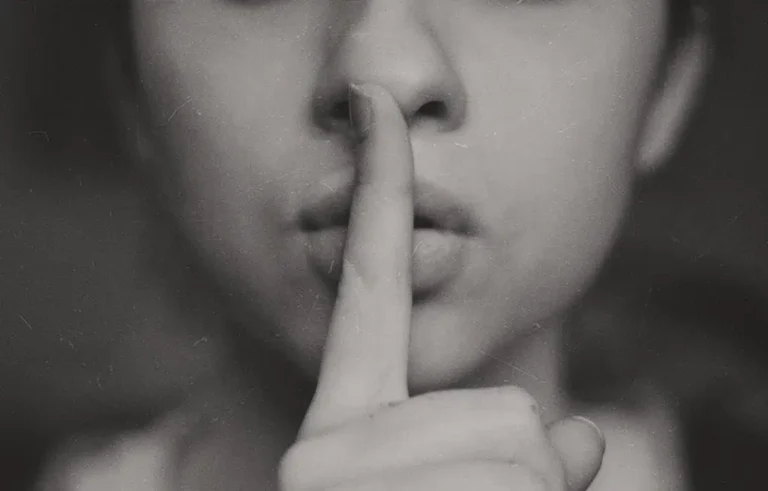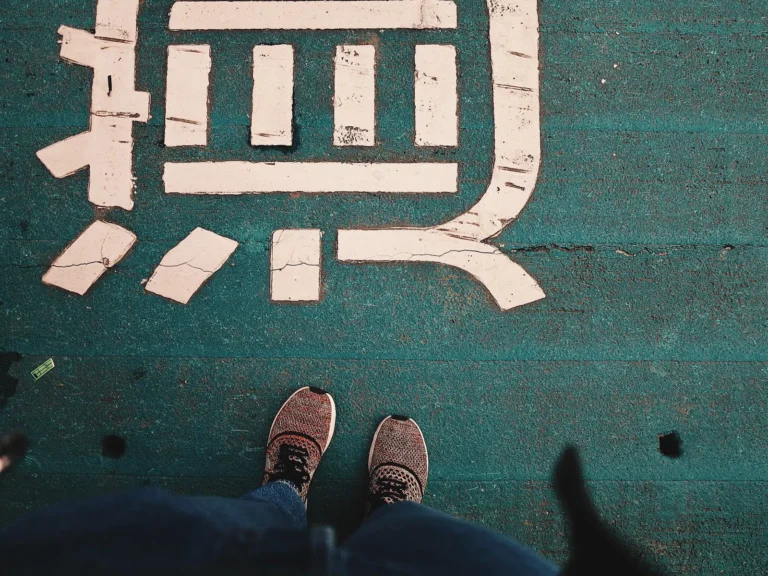A conservator-restorer is a professional who preserves and restores objects of significant cultural or historical value.
A conservator-restorer is a highly committed professional involved in the conservation of objects which are valuable in artistic, aesthetic, cultural, scientific or historical terms.
A conservator-restorer possesses both theoretical knowledge (fine arts theory, cultural and technological history, chemistry, biology) and practical technical skills.
Their role is to assess the material condition of an object, find strategies and apply scientific methods to maintain its integrity, prevent its decay or restore it.
In order to do so, they look at the history and mode of fabrication of the object.
They also assess the possible causes of an object’s deterioration, including:
- Corrosion due to light, incorrect levels of temperature or humidity
- Transportation
- Pests
- Atmospheric pollution
- Neglect
A conservator will carefully intervene to correct the defects of the object by, for example, mending tears on a work of art on paper, reconstructing a broken ceramic pot or removing darkened varnishes on a painting.
A conservator must document the methods and procedures used for future reference and make sure that the restoration process is gentle and reversible.
A conservator will then advise on the best measures to prevent further decay, such as finding adequate storing or display facilities, or creating copies of an object which is too fragile to be exhibited.
In the case of preventive conservation, the conservator researches the best environmental conditions to avoid the deterioration of an object or building.
Conservators can also be involved in enhancing the understanding of cultural heritage by organising exhibitions and displays of rare objects for the general public.
Conservators are normally specialists in a particular type of object and are members of the professional body that caters for their subjects, for example:
- Paintings: British Association of Paintings’ Conservator-Restorers (BAPCR)
- Furniture: British Antique Furniture Restorers’ Association (BAFRA)
- Archives: Archives & Records Association (ARA)
- Books: British Library Centre for Conservation
- Archaeological materials: Council for British Archaeology (CBA)
- Textiles: Textile Conservation Centre
- Buildings: Institute of Historic Building Conservation (IHBC)
Conservators work in a variety of settings in the public or private sector, according to their speciality.
They can be employed by museums, art galleries, libraries, cultural heritage services, or by private individuals on a freelance basis.
Salary
The starting pay for graduates is usually low, between £20,000 and £22,000 per year.
With a few years’ experience, the salary can rise to £23,500 per year.
With a professional accreditation (gained after a minimum of 5 years’ experience), you can earn up to £27,000 per year.
At senior level, you can earn on average £37,000 per year.
Responsibilities
- List, monitor and photograph cultural heritage objects
- Restore damaged objects to their original state
- Create the most appropriate conditions to preserve fragile objects
- Identify risks of deterioration of objects and buildings
- Advise local authorities, conservation bodies and individual clients on adequate measures to protect their cultural heritage
- Produce treatment reports, which include the description of the location, dimensions, fabric and state of the object, as well as recommendation plans and an estimate of the time and budget needed to restore the object
- Organise special exhibitions and displays
- Produce copies of fragile objects
- Document the processes and methods used for conservation and restoration
- Supervise the handling and transportation of cultural heritage objects
- Adhere to a strict code of professional conduct and confidentiality
- Be fully versed in intellectual property laws
- Respect health and safety regulations
- Visit archives to carry out research on objects to restore
- Participate in the training of assistants
- Develop educational projects to promote the value of conservation with the general public
- Undertake continuing professional development
Qualifications
Training will depend on the field of conservation you choose: academic qualifications exist in the areas of fine art, archaeology and architecture, but in some cases you will have to learn through apprenticeship or by studying the craft you are interested in (metalwork, textiles, stained glass, sculpture, furniture, etc).
The Institute of Conservation (Icon) is a great training resource.
Its website has a list of full-time and part-time courses according to the material or craft you want to work with.
After your initial training and with a certain amount of experience, you can become accredited.
This is strongly advised, as it will prove to prospective employers that you are committed to high standards of work and ethics, and that you will keep abreast of the latest conservation techniques through continuing professional development (CPD).
There are several accreditation schemes.
The Professional Accreditation of Conservator-Restorers (PACR) scheme is the most widely recognised and can be used for all fields of conservation.
To apply for PACR you must be a member of one or more of these accredited organisations: the Institute of Conservation (Icon), the Archives & Records Association (ARA), or the British Horological Institute (BHI).
Skills

- Passion for cultural heritage
- Excellent knowledge of art history and history of materials and techniques
- Critical thinking
- Methodical approach
- Scientific skills
- Good judgment
- Sense of ethics
- Enquiring and flexible mind
- Excellent communication skills
- Manual dexterity
- Patience
Working Conditions
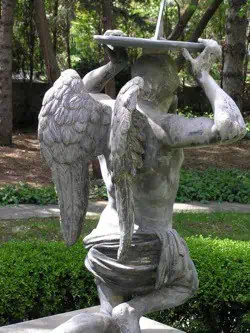
This job is for people who are passionate about maintaining cultural heritage and are comfortable with earning a low salary, even with a great level of experience.
Finding stable employment can be difficult and stressful, as most contracts are short term or freelance.
You will have to travel to a variety of locations to inspect and restore objects, so it is highly advisable to have a clean driving license.
Experience
Fierce competition awaits candidates to conservator-restorer positions and posts are scarce, so voluntary work experience is essential.
Becoming a member of one or more conservation organisations will also help you to network and improve your employment prospects.
Employers
Major public sector employers include the National Trust, English Heritage and national and local museums.
Career Progression
As your career advances, you may progress to managing a technical section of a museum or become a lecturer in a higher education institution.
Image
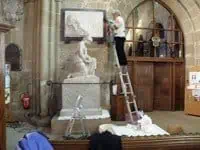
Also known as…
- Conservator
Related Jobs
- Conservation Officer
- Conservation Technician
- Archaeologist
- Historic Buildings Inspector
- Curator
What’s it really like?
Jane Foley is a conservator-restorer based in Builth Wells, Wales.
Her photos show before and after pictures of a 17th-century life-size figure made of lead which fell in two under its own weight after the inadequate steel support inside rotted through.
The treatment involved installing a complete stainless steel “skeleton” support system and then restoring the lead.
The other set is a double marble sculpture of the legend of Atala and Chactas.
This was submerged during Hurricane Katrina in Oklahoma, and needed major work to achieve the result seen in the pictures, including restoration of toes and a finger.
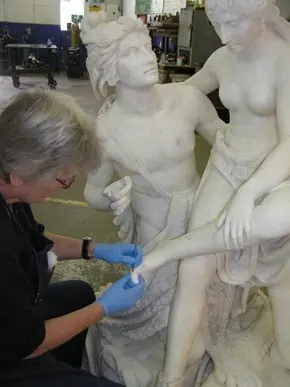

What is your job title?
I have several positions:
- I am a sole trader and the owner of Foley Conservation in the UK.
- I am the Head of Conservation at the Amorium Excavation Project in Turkey.
- I am occasionally Manager of Sculpture and Objects for special projects at the Litas Liparini Restoration Studio in Chicago, USA.
How long have you been in this particular job?
I have been a conservator-restorer for 20 years.
What did you do before this job and how did you end up doing it? Did you do an apprenticeship?
I was doing a conservation degree from the City and Guilds of London Art School, followed by an MA in Heritage Management from the University of Birmingham.
During my initial training, I did an 8-week internship at the British Museum.
I later worked there for several
years before becoming a freelancer.
What academic qualifications do you have?
I have a Diploma in Conservation (equivalent to a BA) from the City and Guilds of London and an MA.
Do you think that university prepared you for the way the work gets done in the real world?
Yes, excellently.
What do you do in a typical working day?
I perform conservation treatments on sculpture and objects, fresco and wall murals.
I write reports and treatment proposals.
What are the most important qualities an applicant must and should possess?
You need practical ability, an understanding of chemistry and an ability to apply theory to practice.
Do you get to travel a lot for your work, and if yes, which parts of the world have you been to?
Yes, I travel to the Middle East (Kuwait and Egypt), Turkey and the USA.
What is the most delicate work of conservation/restoration you have undertaken?
Flaking wall paintings. The problem with flaking paintings is they are falling off – it is painstaking work to re-adhere paint flakes back to the surface, using reversible methods.
I have just faced a wall painting with tissue paper as the wall behind is full of moisture and pushing the painting off the wall in tiny flakes.
It is not safe to treat the painting properly while the wall is unstable.
So while the architect is putting permeable layers on the walls and repairing areas of damp access (holes in the wall and roof), the painting has to be held together with something I can remove later – in this case tissue paper and methyl cellulose.
If the wall does not improve, I will have to remove the painting from the wall and adhere it to a new mount.
This is why paint flakes can be harrowing to treat.
What has been your best experience on the job?
Ten years working on sculpture in the USA and my time at the British Museum; it is all good.
What was the worst experience?
Conserving 750 cubic feet of carved stone in a church!
What advice would you give to someone thinking of doing this job?
Don’t do it unless you can totally dedicate yourself to all aspects.
There is no quick fix and you need to pay attention to those helping you who know more than you do.
Don’t be proud or arrogant.
Grab opportunities and work for nothing or little if you have to, to gain experience.
If you left this position, what else would you consider or enjoy doing?
Forensic archaeology.
Do you mind us publishing your salary / rate per hour – this is very helpful for job seekers?
I started on £10 per hour – I have worked for £100 per hour but I mostly work at £35 per hour after 25 years’ experience.
It is the best job I know.




